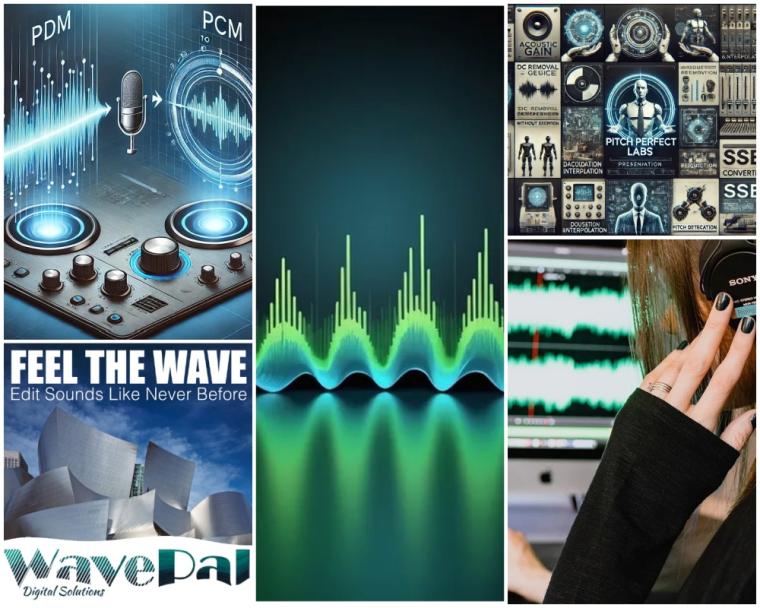This Is How a Real Hi-tech Company Works

Instead of test, students at the Systems and Signal Processing course were divided into five groups and established fictive hi-tech companies that manufacture and sell audio signal processing products. The response, says Dr. Ofer Schwartz, was highly enthusiastic
The systems and signal processing course is one of the core courses at the electrical engineering program, particularly in the signal processing track. It covers different signal processing techniques, from Fourier analysis to communication uses and sampling theory. The course is open to all second year electrical engineering students, and averages 250 students every year. The course was designed by Prof. Ze’ev Zalevsky and Faculty of Engineering alumnus, Dr. Ofer Schwartz, who has been an adjunct professor for the past seven years. “This year, because of the war and wanting to help out our students on reserve duty, we decided to have an end-of-course project instead of a test. I racked my brain trying to figure out what to do,” shares Schwartz. “Projects in these types of courses are usually solving a mathematical problem, which might teach theory but doesn’t necessarily connect the students with the work they’ll be doing later in their career. Besides, when you give everyone the same project, you tend to get some plagiarism; there’s no control over it and it’s hard to give out a fair grade.”
The solution came to Dr. Schwartz from his other title, signal processing researcher at Elbit. “The tools we teach in this course are useful in the industry and in hi-tech. So I came up with an innovative solution that I have yet to see in the academic world: Let the students form their very own fictive hi-tech companies in the field of system processing. They would all get the same list of tasks. Divide into teams just like in real hi-tech companies, manufacture audio signal processing interfaces and take their ideas to whatever applicative area they wish, marketing it as they see fit. One of the companies, for example, chose to market their product as a hearing aid for students who want to hear the instructors better in class.”
The students were divided into five groups, with approximately 50 students in each, and every student had a specific role in the company – all real hi-tech positions. “We started with management, five of the most prominent students volunteered to take on the position. The groups essentially formed around them. Each company had ten R&D teams, working on ten different tasks related to what we’ve learned during the course: building communication protocols, noise abatement, detecting speakers’ vocal qualities, etc. They took the mathematics they learned in class and applied it on the computer. Other students were selected for supporting roles, such as CTO teams responsible for all knowledge, research, and the mathematical depth of the products; operations research teams, tasked with preparing performance reviews for the R&D teams, offering feedback and helping them improve; integration teams, responsible for taking the ten small modules designed by the R&D teams and compiling them into a single, comprehensive product; and sales and marketing teams, in charge of website building and updating, as well as preparing videos, posters, and presentations.”
The grades were determined based on personal interviews. Therefore, each company prepared a presentation and a live demo of their product. “I saw how incredibly enthusiastic everyone was, with levels of investment and dedication I’ve never encountered before,” says Dr. Schwartz. “The students’ feedback was that they finally got a sense of how a real company runs. They learned what areas they find more captivating, what it’s like to work as a team, meet deadlines, self-management. You usually don’t do these kinds of things in academia, and they really enjoyed themselves. But more than the enthusiasm, it prepares them to the real world in a way they couldn’t have gotten anywhere else.”
Segev Sofer (25), the student head of No Signal, agrees. “Our experience in this course was completely different from anything we’ve one so far – this was a brand new challenge that included area that aren’t even taught in the scope of this degree, least of all in second year courses. The project really gave us a practical understanding of the theory. For example, I, as team leader, had to track the progress of the other members of my team, help out with any problems, and set goals. I think we all really enjoyed the work and the outcome, which we proudly display on our website, created by our sales team. I feel that the project gave me a better understanding of what the industry is really like, and also helped me better understand the course material, not to mention opening up my mind to new possibilities in the industry and a future in management.”
Sounds interesting? Check out the fictive companies’ websites:
Last Updated Date : 28/09/2024



